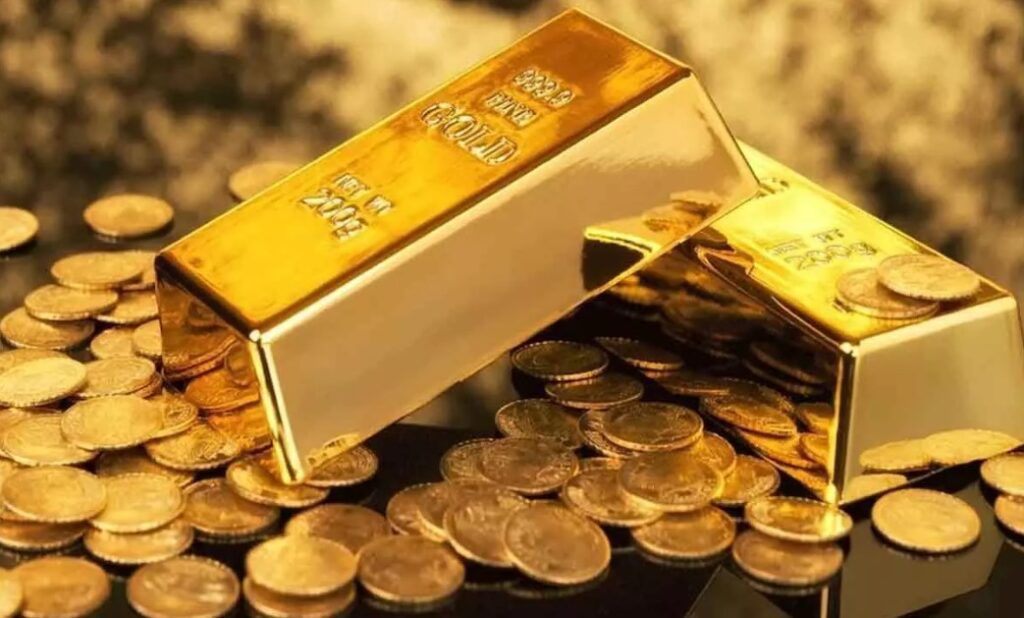Gold Price in India
Buying gold can be a great way to diversify your investment portfolio. However, gold prices are not set in stone and can be affected by many factors, including government policies, the economy, and demand and supply. However,  gold has proven to be a reliable investment during tough times and can serve as an alternative to cash in times of crisis.
gold has proven to be a reliable investment during tough times and can serve as an alternative to cash in times of crisis.
Gold prices have increased in the last six months. Although the price has been relatively stable, several factors can influence the rate. Government policies may influence the gold rate in India. For instance, the government may adopt tariffs, duties, and Goods and Services Tax (GST) on gold. The price of gold may also be affected by the rupee-dollar equation. The Indian rupee may be affected by the economic situation and may slide against the US dollar.
The central bank plays a crucial role in setting gold rates. When a central bank reduces its gold reserves, it will buy more gold to replenish the depleted inventory. This can also lead to a fall in gold prices. Similarly, when the rupee slides against the US dollar, the price of gold in India may rise. The price of gold can also be affected by the country’s currency inflation. For instance, if the economy in India suffers from a recession, the price of gold may increase.
The gold rate in Mumbai varies due to several factors. These factors include the cost of transportation, the inflation rate, and the reserve available in the Reserve Bank of India (RBI). Also, the gold rate in Mumbai is affected by the international gold market. The price of gold in Mumbai is also influenced by government policies.
The gold rate in Thanjavur, which is the fourth most populous city in India, fluctuated between January and March. The gold price began at Rs.4,787 per gram in January and ended at Rs.5,033 per gram in March. The gold rate in Thanjavur was also affected by government policies, such as the Goods and Services Tax (GST) and the Goods and Services Tax (GST) on gold.

The gold rate in Bangalore, which is now known as Bengaluru, has also increased in recent months. The gold price in Bangalore increased by 6.58% in March, compared to the price in January. Despite the increase in gold prices, the demand for gold in the city has been good throughout the year. The price of gold in Bangalore has also been affected by the decline in the rupee.
The price of gold in Mumbai may also be affected by the government policies, such as the Goods and Services Tax (GST) and the Goods and Services Tax (GST) on gold. It can also be affected by the current account deficit in the country. The current account deficit is the difference between the amount of money received from exports and the amount of money spent on imports. Therefore, the gold rate in Mumbai may be affected by the current account deficit in the nation.
Factors That Affect Gold Rate In India
Let’s search for some of the most important factors that affect gold’s price.
1) Inflation: Due to its almost constant nature compared to currencies, gold is extremely valuable when used to tamp down inflation. Trading professionals favor gold over money because of this. For this reason, the demand for gold increases when inflation does, and vice versa.
2) Globalization: Any change in the global gold price impacts the yellow rock’s price in India. This happens due to the reality that India strikes as one of the biggest buyers of gold, and as a result when import prices fluctuate due to global price fluctuations, the same mirrors in commodity prices at home.
3) Gold Reserves Of The Government: Most large countries’ central banks keep both money and bullion. The  Reserve Bank of India and the Federal Reserve of the United States are notable examples of this. The value of gold rises as large nations’ central banks begin to retain national assets and purchase more bullion. It is because the industry’s cash flow has risen while the supply of resources has decreased.
Reserve Bank of India and the Federal Reserve of the United States are notable examples of this. The value of gold rises as large nations’ central banks begin to retain national assets and purchase more bullion. It is because the industry’s cash flow has risen while the supply of resources has decreased.
4) The Jewelry Industry: Gold jewelry is trendy among Indians. Gold prices rise throughout the festival season, including during holidays like Diwali, as a result of the increased customer demands. In addition, prices rise as a result of the requirement imbalance.
Gold is in high demand for many reasons other than just jewelry. Numerous mobile firms employ modest amounts of metal in equipment production, including televisions, computers, and GPS systems.
5) Trends In Interest Rates: Monetary policies on financial products are inextricably linked to price increases. For example, recent gold prices often predict a nation’s interest rate prospects. This is because consumers usually sell gold to obtain cash when interest rates rise, resulting in a decrease in gold rates due to increasing availability.




